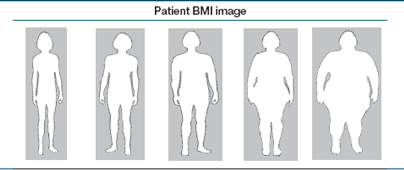A MetLife Report on the Health Status of the 40+ Population paints a sobering picture.
A MetLife Report on the Health Status of the 40+ Population paints a sobering picture. It focuses on three areas.
Obesity
Obesity carries with it an increased risk for many chronic conditions, such as hypertension, high cholesterol, cardiovascular disease, cancer, and even loss of sight, among others.
Unhealthy behaviors and lifestyles that impact our health such as poor eating habits, lack of exercise, lack of sleep, excess alcohol, and stress affect our quality of life, longevity, and ultimately increase our healthcare costs.
These numbers tell the story:
- More than a quarter (27.1%) of adults aged 50-64 are sedentary, defined as not doing any physical activity outside of work for 30 days.
- 27.8% of U.S. adults 18 years and older—66 million people—are obese, defined as being roughly 30 or more pounds over a healthy weight.
- 9.5% of U.S. adults have diabetes.
- 30.8% of U.S. adults have high blood pressure, or hypertension, which is a primary risk for cardiovascular disease.
It is estimated that obesity increases the cost of Medicare expenditures, per person, by $1,723 per year. The annual medical burden of obesity is nearly 8.5% of total annual Medicare expenditures.
Greater Prevalence of Chronic Disease
- Data from the National Health Interview Survey found that between 2000 and 2010, the percentage of adults ages 45–64 with two or more of nine selected chronic conditions increased for men and women, all racial and ethnic groups examined, and most income groups.
- The percentage of these chronically-ill adults who did not receive or delayed medical care due to cost increased from 17% to 23%, and the percentage who did not receive needed prescription drugs due to cost increased from 14% to 22%
Growth in chronic conditions during the 10-year period reported is due to the prevalence of hypertension increase from 35% to 41%, diabetes from 10% to 15%, and cancer from 9% to 11%, among those aged 45 and over.
Disability Decreases for Older Population, Increases for Younger
The 65+ Medicare population has actually decreased in disabilities. Several researchers have found that disability is increasing in the under-65 population. Several researchers have attributed at least 50% of the decline in recent disability to change in the education composition of the population. Increases in education and health literacy have been a major force for improvement in health over time, primarily in the area of disability.
The 65+ Medicare population has actually decreased in disabilities. Several researchers have found that disability is increasing in the under-65 population. Several researchers have attributed at least 50% of the decline in recent disability to change in the education composition of the population. Increases in education and health literacy have been a major force for improvement in health over time, primarily in the area of disability.
Technology and In-Home Care
Both technology and in-home care have the potential to make very positive impacts on overall health status and associated costs, especially as people age and are faced with more incidents of chronic disease and potential accidents.
Recently back from the World Health Congress, I can report that tele-health is the wave of the future. Get ready for more care at room designed to keep you out of the emergency department, the hospital and even your physician’s office.









